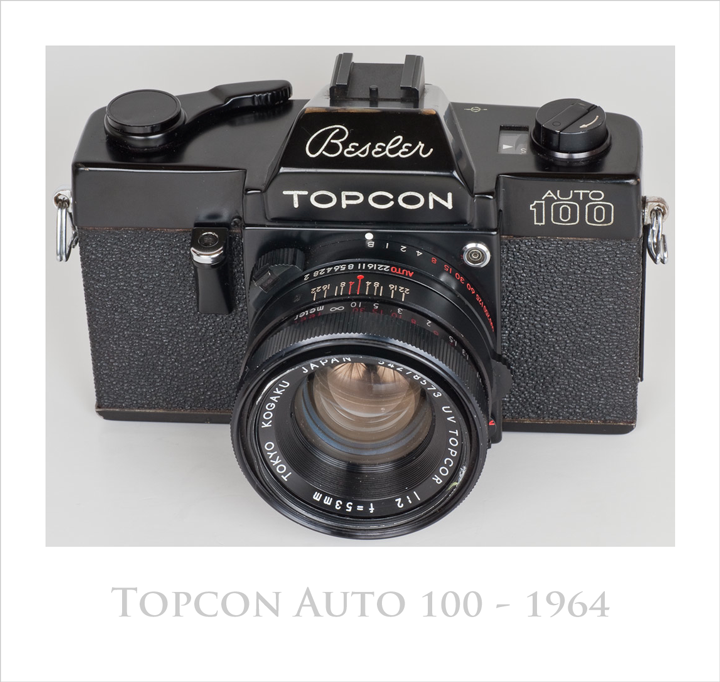Hello there!
Happy friday! time to hit the weekend, here is an very cool entry, the first camera offering Through the Lens Metering, the Topcon Auto 100, here some facts:
- First SLR with automatic through-the-lens metering
- $160 with f2 lens in 1965 ($1108 in 2010 dollars)
The Topcon RE Super, introduced in 1963, was the first SLR with fully-coupled through-the-lens (TTL) metering. “Through the lens” means that the meter reads the light coming through the lens, rather than just the unfocused light that hits outside of the camera. “Fully coupled” means that you set the aperture or shutter speed, or both, and the meter tells you when you’ve reached the correct exposure.
But the RE Super didn’t set the exposure automatically–you had to do it manually. The Pentax Spotmatic worked similarly.
But then in 1964 Topcon brought out the cheaper Auto 100, less well-built and with a behind-the-lens leaf shutter instead of the RE Super’s focal-plane shutter. The Auto 100 kept the TTL metering system, and added, for the first time ever in a TTL SLR, automatic exposure. It was shutter-priority: You set the shutter and the camera chose the aperture all by itself, indicating its choice in the viewfinder.
The Topcon TTL-metering system used a unique technology: Instead of positioning a traditional CdS cell somewhere in the light path, it used a CdS printed-circuit bonded to the back of the mirror, which had .1mm slits etched in it to let about 10% of the light through.
When you remove the Auto 100’s lens, the shutter- and aperture-selection dials stay on the camera, so the lens mount is pretty far from the focal plane. That’s too far for most rear elements, so the rear part of the lens goes way into the camera, as you can see from the photo below.
The Auto 100 has the same complicated shooting sequence of all other leaf-shutter SLRs: The shutter has to be open for viewing and metering, so something else has to block light from the film. In the case of the Auto 100, it’s a baffle behind the mirror (and behind the meter). When the shutter release is pressed, the shutter closes, the mirror/meter/baffle swings up, the lens stops down, the shutter opens, the shutter closes, the lens opens up, and the mirror/meter/baffle returns. One might ask why this arrangement was cheaper than just using a focal-plane shutter, which was widely used in Japanese SLRs by 1964. My guess is that Topcon was trying to avoid another complication, that of coupling a focal-plane shutter to the meter. With a leaf shutter, being right behind the diaphragm, it was more straightforward. A focal-plane-shutter SLR with automatic exposure didn’t arrive until a year or so later, with the Konica Auto-Reflex.
The Auto 100 is seldom given credit for the being the first automatic TTL SLR. In fact, the Konica Auto-Reflex, which didn’t even have TTL metering, more often gets credit for being the first automatic-exposure SLR, even though it came out after the Auto 100. The Auto-Reflex was better known, better made, had better lenses, and had a focal-plane shutter, but it wasn’t first.
Enjoy!
Cesar Out…

